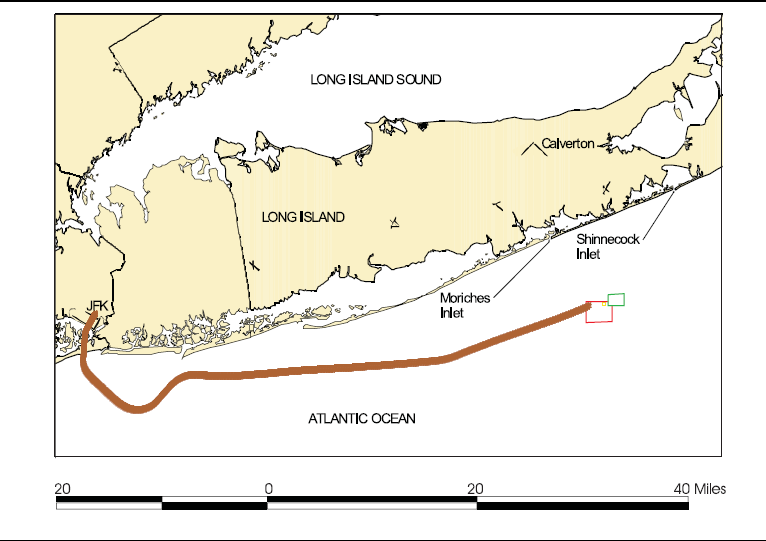
NTSB
TWA Flight 800's path
Everyone agrees on one thing: Metrojet Flight 9268 crashed in Egypt on Sunday after breaking up mid-air, killing 224 people. Why that happened is the focus of intense international discussion at the moment, with some media outlets reporting that U.S intelligence suspects the Islamic State of planting a bomb on the plane, Britain and other countries banning flights in the area and Egyptian authorities holding off on pointing the finger at terrorists.
For many New Yorkers, the debate has to trigger memories of TWA Flight 800, which crashed off the southern shore of Long Island shortly after takeoff from John F. Kennedy International Airport on July 17, 1996, killing all 230 people aboard. Images of that disaster included a debris field stretched over miles and miles of open water, and airplane shards large and small being assembled in a hangar for the investigation.
In a report adopted more than four years after the crash, the National Transportation Safety Board (NTSB) concluded that the explosion aboard Flight 800 was likely caused by a short circuit, which created a spark that ignited fuel vapor in one of the plane’s tanks.
But from the moments after the crash, some witnesses and theorists (the most prominent of which was the former Kennedy adviser and journalist Pierre Salinger) believed it was really caused by a missile—perhaps a U.S. Navy weapons test gone wrong, or maybe a terrorist strike. Some suspected an on-board bomb. Subscribers to the alternate theories mounted a petition drive to get the NTSB to reopen the case. That bid was denied, but the promotion of the alternative theory (though somewhat discredited) continues to this day.
That level of disagreement is not uncommon after a crash. After EgyptAir flight 990 and its 217 passengers plummeted to their deaths near Nantucket after leaving JFK in 1999, U.S. investigators concluded the likely cause was deliberate action by the co-pilot who was at the controls at the time of the disaster. The Egyptian government rejected that conclusion, focusing instead on possible mechanical causes.
The bottom line is it might be some time before people agree on what caused Sunday’s crash. It might be never.








